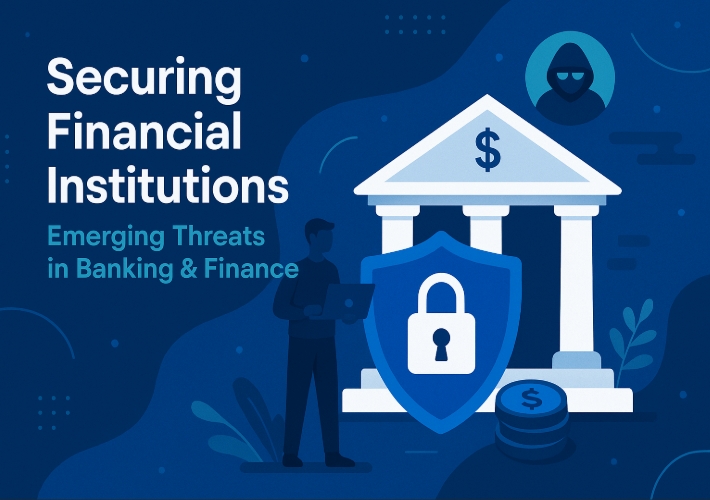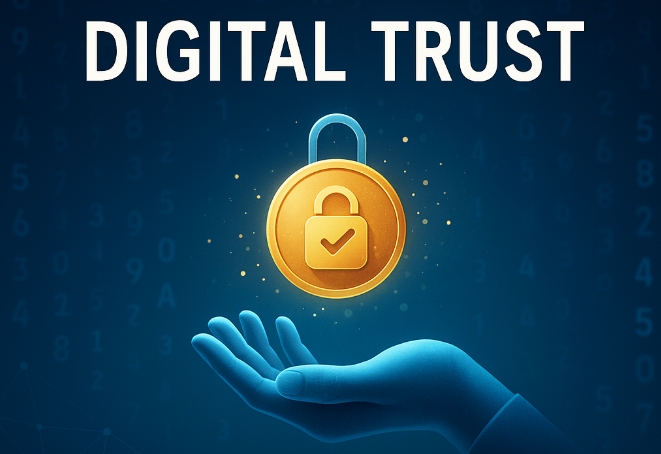Securing Financial Institutions: Emerging Threats In Banking & Finance
Featured Tags
Enterprise Cybersecurity Platform
A Unified Platform to Manage Your Entire Cybersecurity Ecosystem—Tools, Processes, People, Operations, and Governance—Delivering Real-Time Threat Posture and Control.
Kavayah Platform
Cybersecurity in the Financial Sector: Guarding the Digital Vault
Imagine walking into a grand, bustling bank — polished floors, busy staff, customers coming and going. Now, imagine an invisible thief silently slipping through the walls, targeting the bank’s most valuable treasures: personal information, financial records, and corporate secrets. This is not fiction. It’s happening every day — not in the physical world, but in the digital one.
The Digital Heart of the Global Economy
In today’s fast-moving world, banks and financial institutions are the backbone of the global economy. From mobile banking apps to AI-powered investment platforms, technology has made managing money faster and more convenient than ever before. But this wave of innovation has also brought a darker side: cyber threats that are smarter, faster, and more dangerous.
Hackers and cybercriminals now see financial institutions as gold mines. Whether a multinational bank or a startup offering online payments, no organization is truly safe. These attackers are highly trained, organized, and sometimes state-sponsored. Their goal? To quietly infiltrate systems, remain hidden, and inflict maximum damage — stealing data, freezing operations, or undermining the very trust customers place in their banks.
The threat is real and growing. As banks build bigger digital empires, their defenses must grow stronger too.
Case Study: The Bangladesh Bank Heist
One of the most infamous cybercrimes in the financial world occurred in 2016, when hackers infiltrated the Bangladesh Bank’s systems and attempted to steal nearly $1 billion via fraudulent transactions over the SWIFT network. Although most transactions were blocked, approximately $81 million was successfully transferred and laundered through casinos in the Philippines.
This incident exposed vulnerabilities in global banking infrastructure and served as a wake-up call for financial institutions worldwide.
The Evolving Cyber Threat Landscape
The financial sector has long been a prime target due to the sensitivity of its data and the high financial stakes involved. Recently, cyber threats have grown more advanced, with attackers employing sophisticated methods to bypass security.
Key Emerging Threats in Banking and Finance
-
Advanced Persistent Threats (APTs):
Long-term, stealthy cyberattacks aimed at gaining unauthorized network access and exfiltrating sensitive financial data over extended periods. For example, APT38, linked to North Korea, reportedly stole millions from global banks using such tactics. -
Ransomware Attacks:
Malware that encrypts critical data and demands ransom (often in cryptocurrency) for decryption. Ransomware can disrupt banking operations and damage reputations. In 2021, a major bank experienced multi-day downtime due to ransomware encrypting customer data. -
Phishing and Social Engineering:
Techniques that exploit human error by tricking employees into revealing credentials or clicking malicious links. One finance company’s employees fell victim to a fake IT support email, granting attackers full system access. -
Third-Party Vulnerabilities:
Many banks depend on external vendors for cloud services and payment processing. Weak security in third-party systems can become an attack vector. A major payment processor breach once impacted several banks relying on its services. -
Insider Threats:
Risks originating from within — either malicious insiders or negligent employees. For instance, an employee at a multinational bank leaked customer data in exchange for money, resulting in severe consequences.
Regulatory and Compliance Challenges
With cyber threats evolving rapidly, regulatory bodies worldwide have tightened compliance requirements. Financial institutions must navigate complex regulations governing data protection and cybersecurity standards to safeguard customer information and remain compliant.
The Importance of Proactive Security Measures
To effectively combat emerging threats, financial institutions must adopt proactive cybersecurity strategies:
-
Robust Cybersecurity Frameworks: Develop comprehensive protocols to detect, respond, and recover from threats promptly.
-
Regular Security Audits: Conduct frequent assessments to identify and mitigate vulnerabilities.
-
Employee Training: Educate staff on cybersecurity best practices to reduce social engineering risks.
-
Advanced Technologies: Leverage AI and machine learning to detect anomalies and threats in real-time.
Conclusion
Digital transformation offers tremendous opportunities for the financial sector but also brings heightened risks. As cyber threats grow more sophisticated, banks and financial organizations must remain vigilant and proactive. Understanding the evolving threat landscape and deploying strong, adaptive security measures are essential to safeguarding operations and maintaining the trust of customers in an increasingly digital world.
Enterprise Cybersecurity Platform
A Unified Platform to Manage Your Entire Cybersecurity Ecosystem—Tools, Processes, People, Operations, and Governance—Delivering Real-Time Threat Posture and Control.
Kavayah Platform






